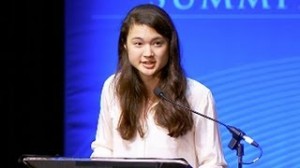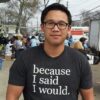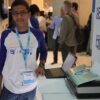Tuesday, July 2nd, 2013 by
Laura Deming, originally from New Zealand, first become interested in aging when she was 8-years-old and learned about death. She recalls: “When I was eight, my mom told me about death and I couldn’t stop crying for days. What a tragedy! Life is incredible, but death is inevitable. I already knew biology was fantastic fun. But that moment, for me, made science more than fun. It made it into a power that could save lives. And I couldn’t imagine doing something more fascinating or important.”

At the age of 12, she emailed Cynthia Kenyon, a professor at the University of California, San Francisco, the Past President of the Genetics Society of America and a pioneer in the field of anti-aging research, renowned for her extension of nematode worm lifespan by 6 times their natural length.
Intrigued by young Laura’s interest, Kenyon allowed her to work as a volunteer. Laura worked on genetically mutated strains of the roundworm Caenohabditis elegans. Laura considers Kenyon to be her first mentor, teaching her “how to think and be creative. She thinks as if there are no rules. Watching her changed how I am as a scientist in a very deep way. And working on this thing that I am passionate about changed my life.” In the lab, Laura became fully familiar with genetics and started believing that aging is probably caused “by a complicated mix of genetic and stochastic factors.”
At 14, she enrolled at MIT as an undergraduate to work on artificial organogenesis and bone-aging, and stared a physics major. When she was 17, Laura was one of two young women to receive the Thiel Foundation Fellowship, worth $100,000 to develop ways to commercialize promising anti-aging research projects and extend the human healthspan. In an interview, she emphasized: “Anti-aging is such an important field, but it is underfunded. Building business around an anti-aging therapy is no mean feat, especially when the FDA does not recognize aging as a disease. The goal here is to create a profitable, self-sustaining structure that will fund a portfolio of anti-aging projects, and then commercialize the research. It will be important that scientists get a stable source of funding for long-term lifespan projects, and a cut of the revenue from the projects they create.”
In order to receive the two-year fellowship, Laura dropped out of MIT and moved to Silicon Valley, California. She began talking to investors about a venture capital firm to find and fund research projects developing new therapies for age-related diseases. Laura eventually became a partner at Longevity Fund, a mission driven venture capital firm doing just that.
When asked whether she would return to college, Laura revealed: “I’m a partner in the Longevity Fund in San Francisco, California, and I am going to stay in venture capital. My passion is to see that I’m getting therapies to market that will extend the human lifespan. I could remain in academia and rely on a grant to support my research into those therapies, or I could see whether that research already exists and do my best to help drugs to the market.”
Apart from receiving the Thiel Foundation Fellowship, Laura has also been selected as one of Forbes’ “30 under 30” in the Science and Healthcare category.
In giving advice to other young entrepreneurs, Laura emphasizes: “Be clear with yourself about what exactly you want to do in the long term. Know how you want to affect the world and what you are passionate about. Ignore boundaries and pursue what you want most to do.”
Subscribe
Sorry, there are no posts.





